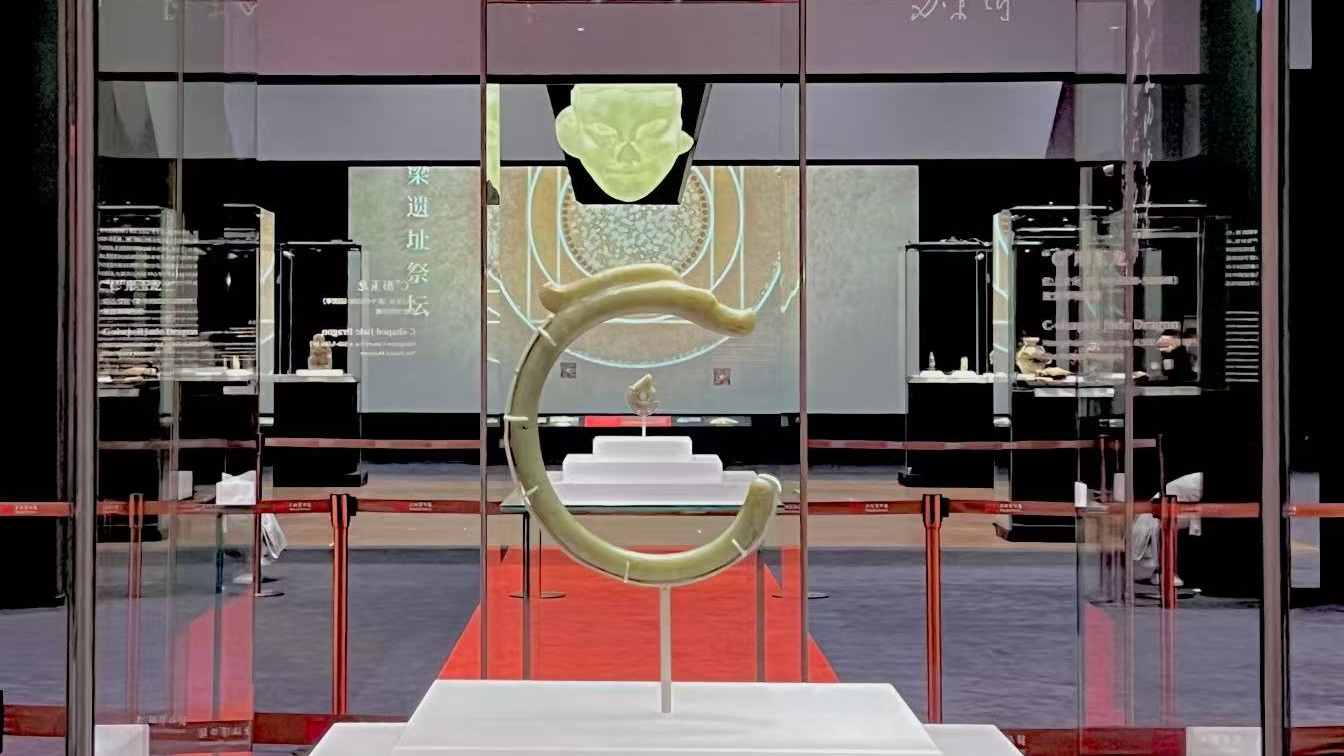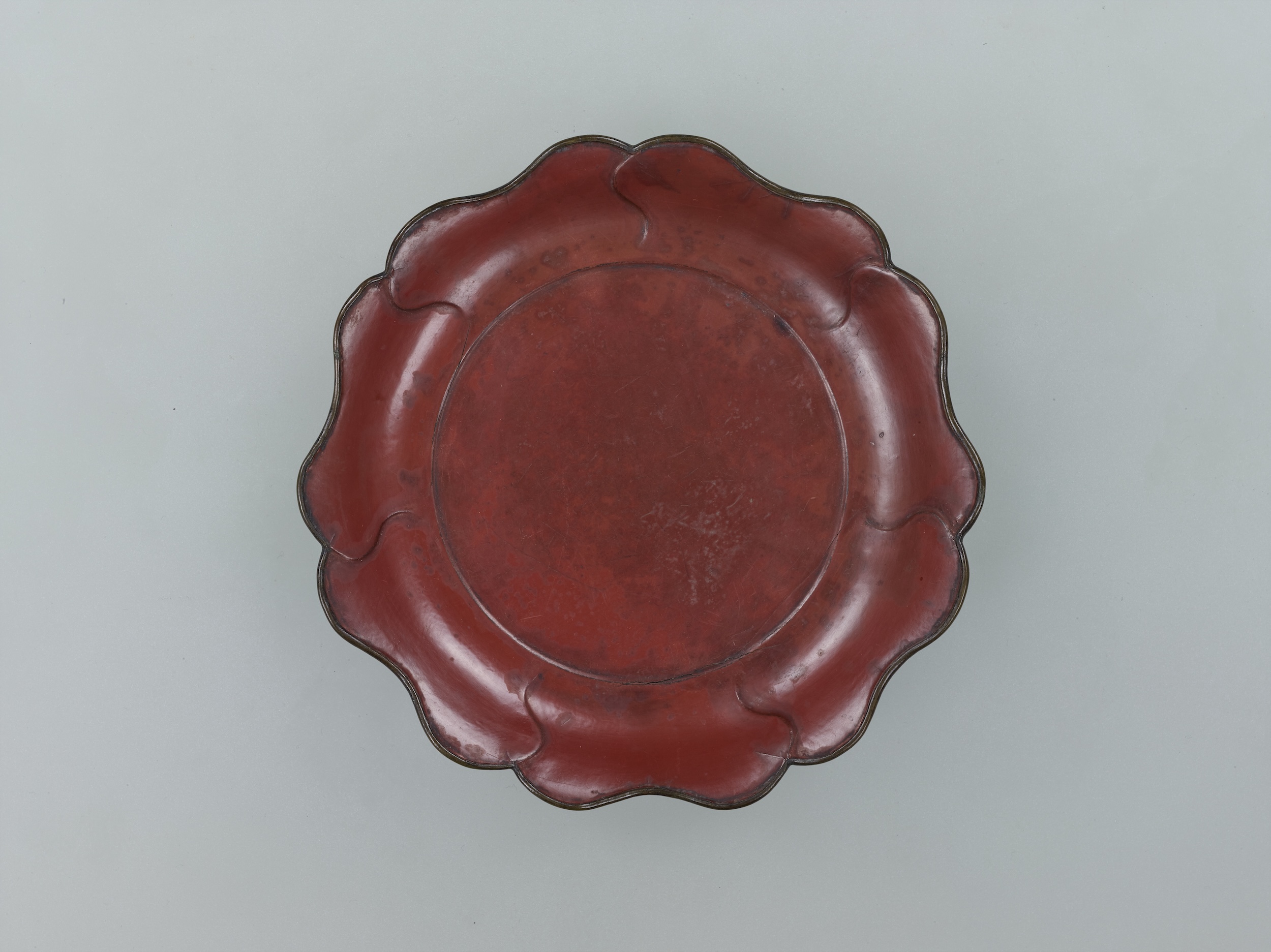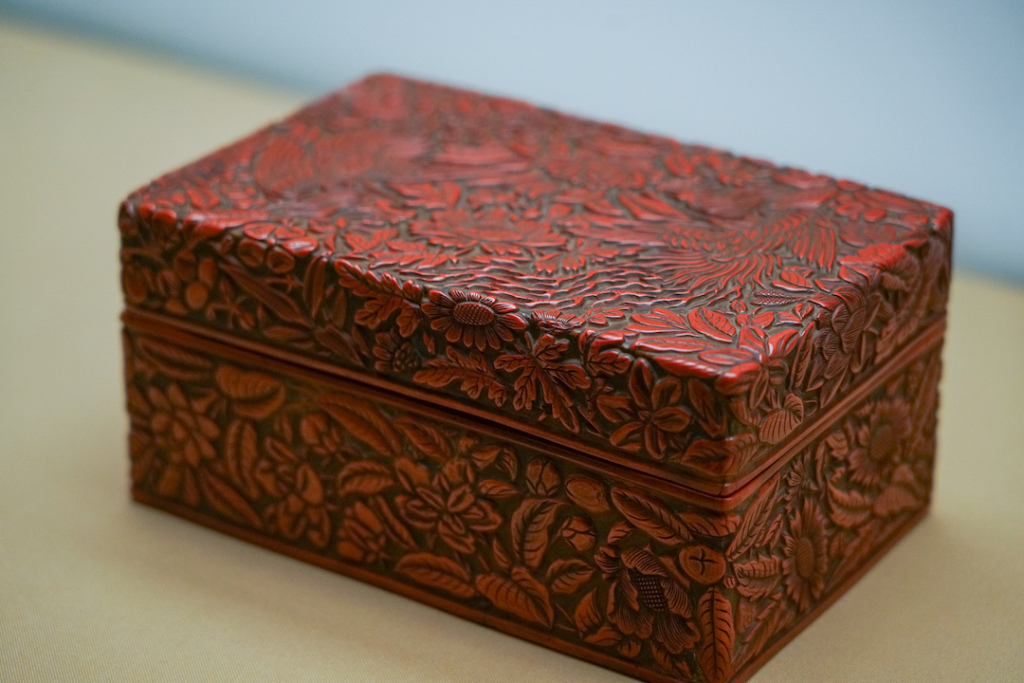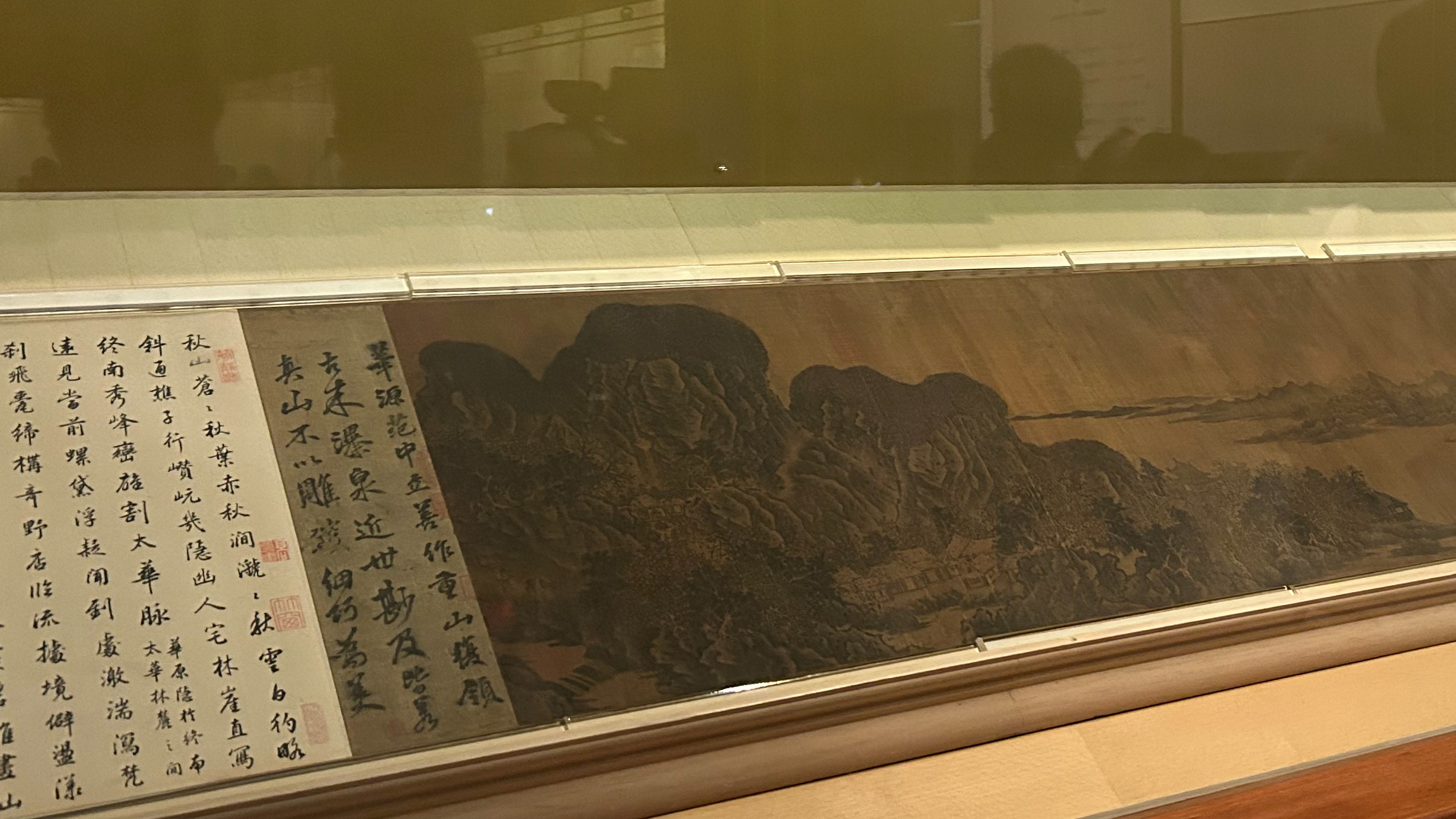
Hongshan Culture is about 5,000-6,500 years old and is an archaeological culture of the Neolithic Age in the Liaohe River Basin. It fully verifies the 5,000-year civilization history of the Chinese nation and reflects the continuity and innovation of Chinese civilization.
On June 25, the fourth exhibition of the Shanghai Museum's "Why China" series of cultural relics and archaeological exhibitions, "Dragon Soaring in China: Hongshan Culture Ancient Civilization Special Exhibition", opened and will be officially open to the public on June 26. The reporter of The Paper saw at the scene that a total of 310 pieces/groups of cultural relics, including jade ritual vessels represented by jade dragons, painted pottery, stone sculptures of gods and human figures, were exhibited, bringing together the most important archaeological history and latest discoveries of Hongshan culture, and more than a quarter of the exhibits were on public display for the first time.

In the Hongshan culture, which dates back about 5,000-6,500 years, jade ritual vessels represented by jade dragons and ritual architecture represented by "altars, temples, and tombs" have a profound impact on Chinese traditional culture. The latest results of the "China Civilization Origin Exploration Project" show that the Hongshan culture represented by the Niuheliang site was the first to enter the ancient country era and gave birth to China's earliest civilization form, fully proving the 5,000-year civilization history of the Chinese nation and reflecting the continuity and innovation of Chinese civilization.

Exhibition site
The Shanghai Museum's exhibition has brought together 20 museums and archaeological institutions in Liaoning, Inner Mongolia, Hebei, Beijing and other places, bringing together a century of achievements and the latest discoveries in Hongshan archaeology. With more than 300 cultural relics, it explains the appearance of an ancient country with unified Hongshan cultural beliefs and an early ritual system, explores how it embarked on a unique path of civilization development, verifies the 5,000-year civilization history of the Chinese nation, and answers the historical question of "Why China?"
According to Chu Xiaobo, director of the Shanghai Museum, this exhibition is the largest and most comprehensive Hongshan culture themed exhibition to date. More than a quarter of the exhibits are on public display for the first time, including the latest archaeological findings in recent years, including new archaeological discoveries at Ma'anqiaoshan Site in Jianping, Liaoning, Yuanbaoshan Site in Aohan Banner, Inner Mongolia, and Zhengjiagou Site in Xuanhua, Hebei. "This exhibition is not only a systematic review of the most important archaeological findings of the Hongshan culture over the past century, but also shoulders the mission of helping the Hongshan culture apply for World Cultural Heritage," said Chu Xiaobo.
The earliest stone dragon and the largest ring-shaped dragon are gathered in the Shanghai Museum exhibition hall
The central display case in the Shanghai Museum's exhibition hall has a beautiful rainbow-shaped curve, flowing and vivid, and the "C"-shaped dragon that best fits the image of a dragon in our minds; the display case is lined up with ring-shaped dragons of various sizes, curled like rings; jade artifacts in the shapes of various animals such as phoenix heads, owl heads, fish, silkworms, cicadas, etc.... As one of the three major prehistoric jade culture centers, Hongshan's exhibition is eye-catching with its exquisite jade exhibits.

Exhibition site "C" shaped dragon Palace Museum collection
The exhibition is divided into three units: "Dragon Out of Liaohe River", "Dragon Traveling in Hongshan" and "Dragon Spreading to Nine Provinces". It adopts a dual-line narrative, with the civilization achievements of Hongshan culture as the main line, and the element of "dragon" as a hidden line in the exhibition.

Exhibition site: Jue-shaped dragon
"This exhibition is called 'Dragon Soars in China'. Dragon culture is one of the most important cultures of the Chinese nation. The jade dragon is one of the most representative jade artifacts of the Hongshan culture," said Feng Yucheng, the content planner of the exhibition and the archaeological research department of the Shanghai Museum. "This exhibition uses 'dragon' as a hidden thread, and the audience can find a 'dragon vein' from the early Xinglongwa culture to the Hongshan culture."
Counting the "dragon"-shaped cultural relics in the exhibition hall, there are as many as 16 jade dragons, one of which is a "C"-shaped jade dragon from the collection of the Palace Museum, and 15 ring-shaped jade dragons from the Liaoning Provincial Institute of Cultural Relics and Archaeology, Balin Youqi Museum, Inner Mongolia, Balin Zuoqi Liao Shangjing Museum, Inner Mongolia, etc.
Jade dragons are the most well-known jade artifacts of the Hongshan culture. According to the differences in shape, they can be divided into two types: C-shaped dragons and ring-shaped dragons. The former are mostly collected from ruins and are named because their overall shape is similar to a C shape. There are more ring-shaped dragons unearthed in formal excavations. The name may mainly come from the curled body. There is no consensus in the academic community on its name, and there are different opinions such as pig dragons or bear dragons.

Exhibition site Hongshan culture ring-shaped jade dragon, collected by Liaoning Provincial Institute of Cultural Relics and Archaeology, unearthed in 1984 from Tomb No. 4 of the No. 1 Mound at the second site of Niuheliang Site in Jianping, Liaoning
The most representative exhibit is a jade dragon in the shape of a ring, which was unearthed from Tomb No. 4 of the No. 1 Mound at the second site of Niuheliang Site in Jianping, Liaoning Province in 1984 (collected by Liaoning Provincial Institute of Cultural Relics and Archaeology). This is also the first jade dragon in the shape of a ring unearthed through archaeological excavation. It is carved from light green jade and slightly yellowed. The whole body is finely polished and has a round luster. There is a reddish-brown patina on the back and bottom. The dragon body is curled like a ring, and the head and tail are cut like a ring. "This jade dragon in the shape of a ring was unearthed in a special position, located on the chest of the tomb owner. The two jade dragons in the shape of a ring are placed back to back, which may be a symbol of the tomb owner's identity." Feng Yucheng said.
"Dragons come from the source of the Liaohe River" is a high-level summary of the large number of dragon-shaped artifacts unearthed by archaeologists during the Hongshan Culture. The various prehistoric dragon-shaped artifacts discovered in the Liaohe River Basin are the earliest, most diverse, and most complete in sequence, and belong to the heyday of the origin and development of jade dragons in early prehistoric China. This exhibition brings together collections from four provinces and three cities, namely Inner Mongolia, Jilin, Liaoning, Hebei, Beijing, Tianjin, and Shanghai, covering four types of materials: clam, pottery, stone, and jade.

Exhibition site: Dragon-shaped clam relics unearthed from the Caitaopo site in Chifeng City, Inner Mongolia
Among them, the stone dragon unearthed from the Zuojiashan site in Jilin Province, which dates back more than 6,000 years, may be the earliest stone dragon ever seen in China. Its appearance is very similar to the jade pig dragon of the Hongshan culture, but it is more simple and ancient, and may be the "ancestor" of jade dragons later discovered in various places. The clam dragon-shaped relics unearthed from the Caitaopo site in Chifeng City, Inner Mongolia and the ring-shaped jade dragon unearthed from the Yuanbaoshan site in Inner Mongolia Autonomous Region are both the latest archaeological discoveries in the past two years. The former's horizontally stretched body is unprecedented, and the latter is 15.8 cm long and is the largest ring-shaped jade dragon unearthed so far.
Dragons were worshiped by the prehistoric Hongshan people and are one of the sources of Chinese dragon culture. As the origin of Chinese dragons, the Hongshan culture jade dragons had a direct impact on the shape of curled jade dragons in the Shang, Western Zhou and Eastern Zhou dynasties.

Various jade articles at the exhibition
"The dragon is an imaginary creature born in the northern region, and was given a clear cultural connotation during the Hongshan culture period. The dragon in the Hongshan culture is one of the important symbols of Chinese culture and a prominent feature of the Hongshan society. It embodies the characteristics of Chinese civilization, which is inclusive, integrated and diversified." said Guo Ming, a researcher at the Liaoning Provincial Institute of Cultural Relics and Archaeology. "Combined with the unearthed and collected objects in archaeological excavations, the distribution range of Hongshan culture jade dragons is quite wide. Such artifacts are made in a standardized manner and their shapes do not change much, which shows that Hongshan culture has formed a relatively unified belief and ritual system." said Gao Menghe, professor and doctoral supervisor of the Department of Cultural Relics and Museology at Fudan University.

Jade pendant with two animals (owls) Hongshan culture (about 6500-5000 years ago) unearthed in Tomb No. 26 of the No. 1 mound at the second site of Niuheliang site in Jianping, Liaoning in 1991
In addition to the jade dragon, the exhibition also displays other animal-shaped jade carvings, hook-shaped cloud-shaped objects, oblique-mouthed cylindrical objects and square and round jade bi. These jade objects show the developed jade worship tradition of Hongshan culture. Prehistoric Hongshan people used jade as a medium to communicate with gods, a symbol of power, and a carrier of rituals. They embodied the common spiritual beliefs of Hongshan society and formed a systematic jade ritual system.
A smile from the Chinese ancestor more than 5,000 years ago
The Hongshan culture was called the "taproot system" of Chinese culture by the famous archaeologist Mr. Su Bingqi, and the altars, temples and tombs at the Niuheliang site were praised as "the symbol of the dawn of Chinese civilization." This exhibition also focuses on the characteristics of the ancient Hongshan Kingdom by focusing on the most important archaeological discovery of the Hongshan culture - the combination of "altars, temples and tombs" at the Niuheliang site.

Exhibition site
Niuheliang site is one of the most important sites of Hongshan culture. In the early 1980s, stone mounds, large altars and goddess temples were discovered at Niuheliang site. The discovery of a series of important sites of Hongshan culture, including Niuheliang site, also triggered a wave of academic discussions on the origin of Chinese civilization.
The Niuheliang site is centered on the Goddess Temple and surrounded by altars and stone mounds. It is a large-scale prehistoric tomb and religious sacrificial site independent of the residential area. It was where the Hongshan ancestors worshipped their ancestors and the heaven and earth more than 5,000 years ago.

Exhibition site
"Hongshan culture is the source of etiquette in later generations. The altars, goddess temples and stone mounds discovered in the Niuheliang site reflect the religious beliefs, social structure and etiquette system of the Hongshan ancestors. This exhibition restores the scenes of ritual buildings through auxiliary displays, allowing the audience to more intuitively understand how the ancestors respected heaven, earth and ancestors." Feng Yucheng said.

Wusha (xí) statue Hongshan culture (about 6500-5000 years ago) Unearthed in 1982 at the Naristai site in Balin Youqi, Inner Mongolia Height 19.1 cm, width 6.2 cm, thickness 5.0 cm Collection of Balin Youqi Museum
Among them, Niuheliang Goddess Temple is the earliest temple in China, famous for the unearthed Hongshan Goddess Head. The large-scale group of statues found in the site is not seen in other sites. The exhibition hall brings together 38 pieces (groups) of human statues of various sizes and shapes, which are physical witnesses of ancestor worship in the Liaohe River Basin. Among them, the Hongshan Goddess Head, which Mr. Su Bingqi called "the female ancestor of Hongshan people and the 'common ancestor' of the Chinese nation", is exhibited in the form of a replica.

Hongshan Goddess Statue at the exhibition site (replica)
The Hongshan Goddess Statue is also a national treasure that the audience is looking forward to seeing. However, it is very difficult to get out of the warehouse. It has never left the archaeological warehouse since the archaeological excavation and has never been exhibited to the public. "This goddess statue is made of clay mixed with grass and grass. Because it has been burned once, the surface is smooth and looks like pottery, but it is actually a clay sculpture." Bai Baoyu, director and researcher of the Liaoning Provincial Institute of Cultural Relics and Archaeology, said, "It is more than 2,000 kilometers from Shenyang to Shanghai. The most worrying thing is that there will be bumps during transportation, which will cause damage to the cultural relics. Although the Shanghai Museum has put a lot of effort into this cultural relic, conducted several road vibration experiments, and formulated a very comprehensive transportation protection plan, it finally negotiated with the Shanghai Museum for the safety of the cultural relics and replaced it with a replica for exhibition." Bai Baoyu introduced that the original of the goddess statue is currently in a very fragile state, like loose soil. In addition to its current preservation conditions of 365 days of constant temperature and humidity, it also needs to add a shock-absorbing device. Bai Baoyu also gave the audience some tips on how to appreciate the goddess statue (replica), "First, the left ear of the goddess statue is pierced, which shows that the Hongshan ancestors had the tradition of wearing earrings; second, she is wearing a headband, which shows that the Hongshan ancestors were not like the primitive people with dishevelled hair as we imagine; at the same time, we should also pay attention to her eyes and mouth, her eyes are inlaid with nail-shaped jade, and her lips are decorated with clam shell stickers. Her smile is particularly mysterious, allowing everyone to feel the smile of the Chinese 'common ancestor' more than 5,000 years ago."
Understanding Hongshan Culture from the Perspective of Civilization
As early as the 1980s, Mr. Su Bingqi proposed the famous three-stage theory of the formation of the Chinese state, namely the "ancient culture-ancient city-ancient country" theory, based on the discovery of altars, temples and tombs at the Niuheliang site. The study of Hongshan culture has a close connection with the exploration of the origin of Chinese civilization.

Niuheliang Site II
In 2023, the State Administration of Cultural Heritage released the latest results of the Chinese Civilization Origin Exploration Project. Starting from about 5,800 years ago, various regions on the Chinese mainland began to show obvious social differentiation, entering an accelerated stage of the origin of civilization. The Hongshan culture represented by the Niuheliang site in the Xiliaohe River Basin is in the first stage of the ancient country era, about 5,800 to 5,200 years ago.
"Hongshan culture is the earliest form of civilization discovered in China. The new archaeological discoveries of Hongshan culture in Niuheliang have pushed the origin of Chinese civilization forward by five or six hundred years," said Jia Xiaobing, director of the World Archaeology Research Office of the Institute of Archaeology, Chinese Academy of Social Sciences.
"As one of the representative archaeological cultures of the first stage of the 'Ancient Kingdom Era', Hongshan Culture has greatly enriched our understanding of the origin of Chinese civilization," said Gao Menghe, a professor at Fudan University. "I hope that the Hongshan Culture exhibition at the Shanghai Museum can provide visitors with a 'civilization perspective' to understand Hongshan Culture from the perspective of understanding the origin of Chinese civilization."

Hongshanhou, Chifeng, Inner Mongolia
Chen Jie, deputy director of the Shanghai Museum, said that the Shanghai Museum's Hongshan Culture Exhibition is timely. "Firstly, there have been new archaeological discoveries about Hongshan Culture in Inner Mongolia and Hebei in recent years. Secondly, the new results of the Chinese Civilization Origins Project have changed the academic community's understanding of Hongshan Culture. In the past, people's understanding of Hongshan Culture may be limited to a certain type of archaeological culture in a certain region. The latest results of the Chinese Civilization Origins Project show that Hongshan Culture represented by the Niuheliang site was the first to enter the ancient country era, which has given us a new understanding of Hongshan Culture and provided people with a new perspective on the early ancient country civilization. We hope that through the centralized display of the archaeological results of Hongshan Culture, more visitors will come to the museum to understand Hongshan Culture, and then have a deeper understanding of the profound and long-standing development process of Chinese civilization."


